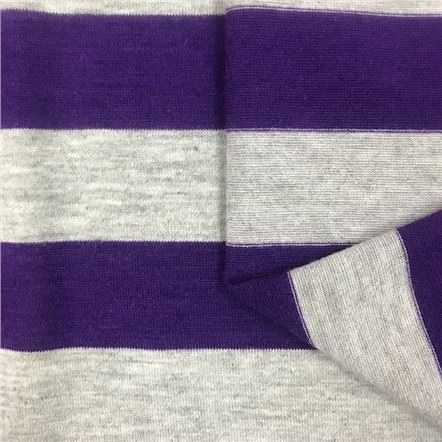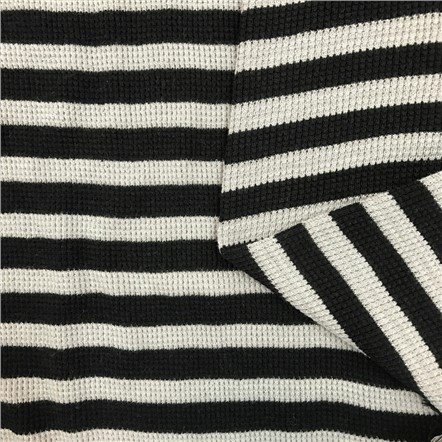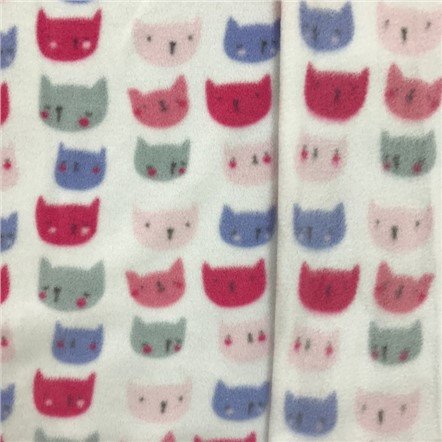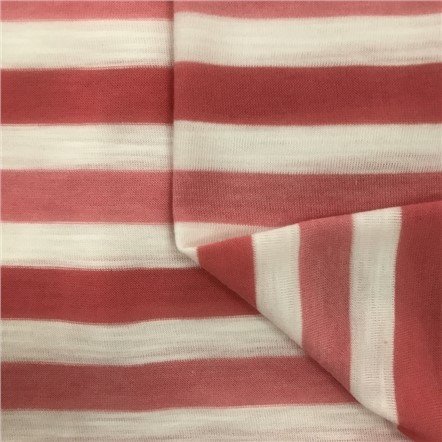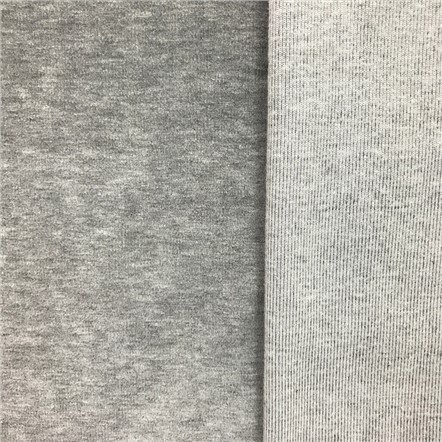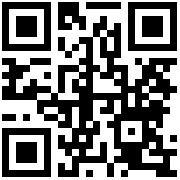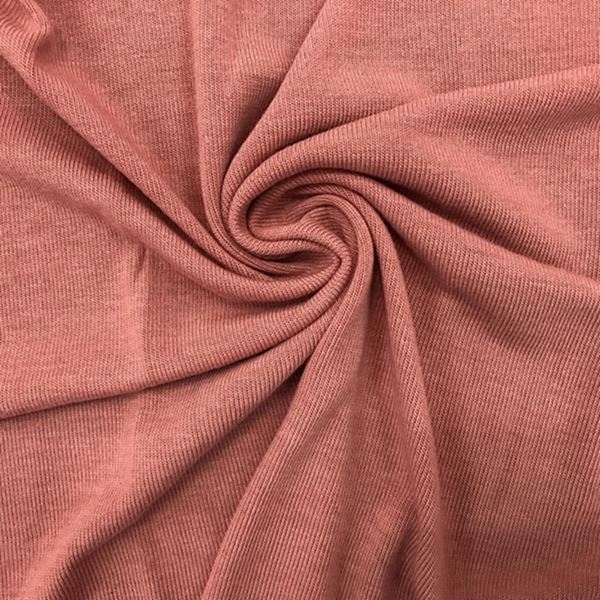
Common printing defects and their causes
1. Dew White
A part of the warp yarn or weft yarn is turned over or moved to the front and back of the fabric, and the pattern appears exactly like the road left after being tortured. The defects are mostly caused by poor color paste penetration and improper handling after printing (uneven tension, etc.).
2. Uneven printing color (spots)
A part of the print has become a variegated pattern like the shape of the skin of a sandfish. This defect mostly occurs when the viscosity of the color paste is not appropriate, the mesh of the screen is not properly selected, or the patch is uneven.
3. Bleeding (dissolved)
The color of the printed pattern oozes out, the outline of the pattern is not clear, and the color is blurred. It is caused by the low viscosity of the color paste, the extremely concentrated dye concentration, the excessive amount of printing ink absorption, or the excessive amount of moisture absorbent.
4. Color stains (color stain/printing plate stains)
The stains caused by the color of the printed pattern being contaminated to other parts. Mostly, it occurs when the printing platen is not cleanly washed, the drying after printing is not sufficiently overlapped with each other, or the fabric and the fabric are in contact with each other in the steaming process. In Japan, some factories use a control method to adjust the tension of the fabric under rope conditions for thorough washing.
5. The color difference between two plates (uneven squeegee)
shows a certain interval of color depth in the transverse direction of the fabric. This defect mostly occurs when the screen frame, the scraper is installed poorly, or the scraping slurry is uneven.
6. Insufficient color paste (desizing)
is the lack of color in the pattern part. It usually occurs when the color paste is not replenished in time, the pressure of the squeegee is uneven, the hardness of the squeegee is improper, the relay of the squeegee is faulty, the surface of the printing platen is uneven, and the viscosity of the color paste and the slurry are inappropriate.
7. Bad pattern joints (pattern printing)
The pattern overlaps or does not match (disengage) at the joint of the pattern. It is mostly caused by improper adjustment of the conveyor belt or improper adjustment of the layout rules, which affects the accuracy of the flower position.
8. The pattern is misplaced (the pattern is crooked, the pattern is inaccurate)
is a printed product with misaligned patterns. Most of the cases occur in the case of inaccurate pattern alignment, poor engraving, and poor patching.
9. Plate frame mark (frame print, take off)
The printed part showed abnormal streaks in the frame shape of the pattern. It is mostly caused by poor conveyor belts and poor installation of pattern frames.
10. Bend (flower-shaped skewed)
means that the pattern is inclined or curved with respect to the warp and weft yarns of the fabric. It usually occurs when the printed grey fabric (silk) itself has weft skew, poor seam head, or skewed platen appliqué.
11. Color point
is a small dot-like color stain. It usually occurs when there are undissolved dyes or impurities attached to the color paste.
12. Friction stains (dragging color)
is a defect caused by contact with foreign matter when the printed pattern is not sufficiently dried, rubbing the color of the pattern part, and staining other parts. This defect usually occurs when the printed fabric is dragged or touched by carelessness when the printed fabric is not sufficiently dried.
13. Dye splashing (screen bouncing, splattering, loose slurries contamination)
is the staining of color spots caused by the splash of color paste. This defect mostly occurs when the processing speed of the drum printing is fast, the starting action in the screen printing is improper, and the viscosity of the color paste is not suitable.
14. Yarn tail is stained
is a yarn-like stain on the printed fabric caused by the yarn tail of the printed silk (cloth). It is mostly caused by poor yarn handling of printed silk (cloth).
15. Deep edge (medium-deep, deep-shallow edge)
is the difference in hue or depth between the two sides and one side of the cloth and the middle of the cloth. It is caused by poor fabric scouring and bleaching engineering or poor installation of screen frame, squeegee board, uneven pressure of squeegee board, and improper padding or color development engineering.
16. Joint overlap color (joint overlap color)
is a defect caused by the overlapping color of the seams of the fabric or the joints of the printed interlining on the cloth surface. It usually occurs when the joint of the fabric or printed interlining is too large or the seam overlap is too large.
17. Printing water stains
is a stain or mottling caused by water droplets. This is because the fabric is dripped with condensed water or splashed with water droplets during a period of time before the end of steaming after printing.
18. Scraper stripe (drag knife/deep scratch)
refers to the band-like defects that appear in the radial direction in roller printing. This defect occurs when the pressure of the printing squeegee is insufficient or impurities are attached.
19. Printed wrinkles
is the strip-like unprinted part due to wrinkles in the printed fabric. Most of them occur due to wrinkling of printed grey fabrics, poor seam heads, excessive appliqué tension, and wrinkles of printed interlinings.
20. Discoloration is not clean or poor anti-dyeing
is the effect of whitening, color drawing or anti-dyeing printing is not clear. It mostly occurs under improper conditions of anti-dyeing paste, color paste, squeegee pressure or color development (vaporization).
21. Dry color paste
is the pattern defect caused by the cracking of the color paste after printing. Mostly due to improper post-printing treatment or improper color paste viscosity.
22. Rope streaks
The streaks formed by the traces of the ropes or rods used in the steaming process are left on the printed cloth. It mostly occurs when the temperature of the steaming process is too high or the finishing temperature is too low.
23. Rope color bar
is the discoloration or contamination caused by the printed cloth contacting the ropes or rods in the steaming process. It is mostly caused by steam condensing on ropes or rods.
24. Needle removal defect or clip mark
is a defect caused by the needle or cloth clip of the tenter falling off or the inside of it is abnormal. It is mostly caused by bad stenter clip or cloth clip, abnormal track, and abnormal fabric width.
25. White spots
is a defect caused by the failure to print color paste on a part of the pattern. It usually occurs when foreign matter is attached to the screen membrane or the yarn knots and foreign matter on the fabric prevent the color paste from printing.
26. Diaphragm
is a defect in which the white background is exposed when the fabric is stretched or bent. It mostly occurs when the color paste is poorly penetrated due to improper conditions such as color paste viscosity, screen mesh, and squeegee pressure.
27. Moire defects (cloud spots)
Previous: WHAT IS WELF KNITTED FABRIC



